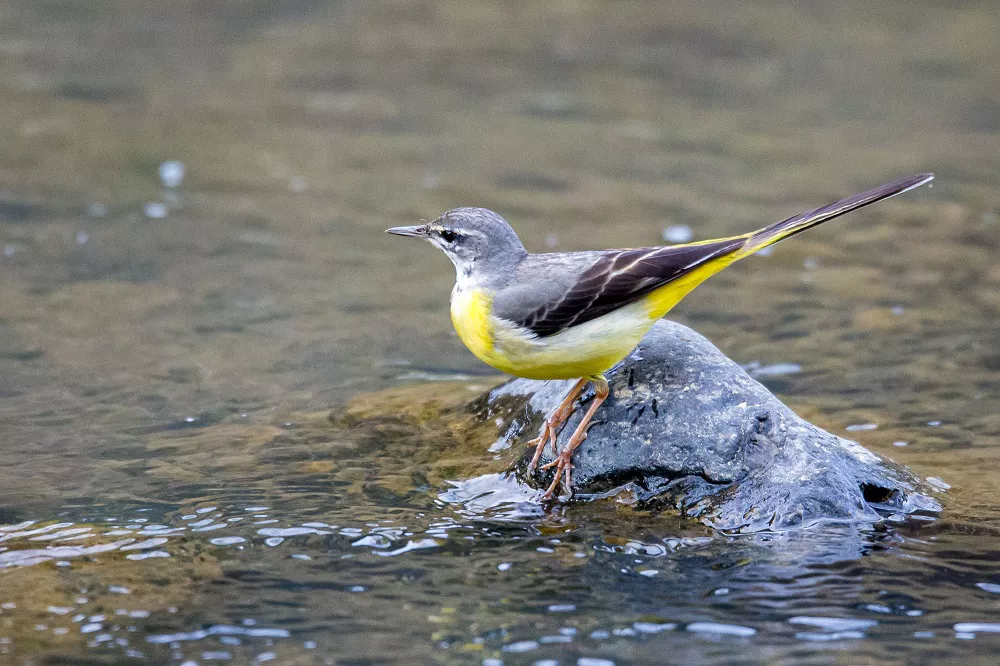The grey wagtail (Motacilla cinerea) is a small passerine bird native to Europe and Asia. It belongs to the family of wagtails and pipits, and it is known for its distinctive plumage and active behavior.
One of the most striking features of the grey wagtail is its bright yellow underside and rump, which contrast sharply with its gray-blue back and wings. However, when it comes to the color of the head, there is some variation among individuals, particularly between males and females.
Male grey wagtails typically have a dark grey or black head during the breeding season, which lasts from April to August. The head is usually glossy and has a greenish or bluish sheen that can change depending on the angle of the light. The forehead and throat are usually lighter in color, ranging from pale gray to white.
During the non-breeding season, male grey wagtails undergo a partial molt, which can cause some of their head feathers to become paler or even turn brownish. However, the overall color of the head remains dark, and the greenish or bluish sheen is still visible.
Female grey wagtails, on the other hand, have a more muted plumage overall, with a gray-brown back and wings and a yellow-green underside. Their head is also gray-brown, but it lacks the glossy sheen and dark coloration of the male. Instead, it has a more uniform and matte appearance.
Juvenile grey wagtails resemble adult females, with a duller and less defined plumage overall. Their head is also gray-brown, but it may have some streaks or spots of lighter color.
Overall, the color of the head is an important field mark for identifying grey wagtails, especially during the breeding season. Males can be easily distinguished from females and juveniles by their dark and glossy head, while females and juveniles have a more subdued and uniform appearance. However, it is worth noting that there can be some variation within each sex and age group, and that other factors such as lighting conditions and viewing angle can also affect the perceived color of the head.


 Facebook
Facebook  Instagram
Instagram  Youtube
Youtube 